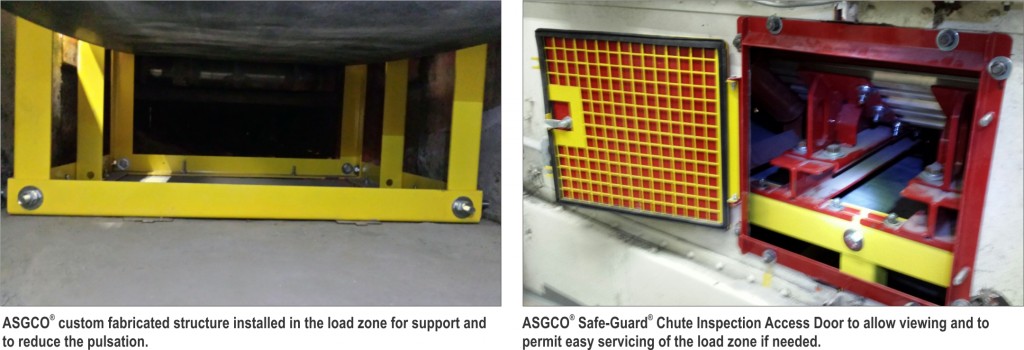Objective: To prevent spillage at this transfer point and eliminate pulsation of the conveyor belt.
Challenge: This customer has had reoccurring issues with this transfer due to spillage.
They have also replaced the tail roller twice due to the pulsation from multiple feeder points. The conveyor
has no self supporting structure. The belt rollers are resting on small pieces of angle mounted to the covers
of the belt-line themselves. Neither the belt, nor the impact zone could be observed. The top rollers in this
transfer point are at 20° degrees whereas the rest of the belt-line is at 35°.
The challenge was to eliminate the spillage, support the belt to prevent pulsation, protect the tail roller, and
fabricate a stand-alone structure to allow the belt support needed and make room to change the 20° section
to 35°, thus minimizing the spillage issue. If this is accomplished, access will also need to be provided to
insure proper operation and allow for serviceability of the load zone.

Solution: ASGCO® technicians recommended that our fabrication facility build a structure or a structural unit
so a 24” standard Impact Cradle Bed™ can be installed between the first and last troughing rollers in the load
zoneto support the belt and reduce pulsation. It was also recommended that they install two (2) 24” x 24”
Safe-Guard™Inspection and Access Doors, one on each side, to allow access and permit easy servicing of the
load zone if needed. The doors also permit a legal observation point to monitor the transfer.
Results: Spillage was reduced to nearly zero by changing the pitch of the load zone to 35°. The evident pulsation
was eliminated giving relief to the tail roller and has been in operation for a year now with no current issues or
stress fractures. The access doors allowed the customer to view, access, and service the load zone if necessary,
where as previously, they would have had to disassemble entire portions of the unit to gain access or observe.

